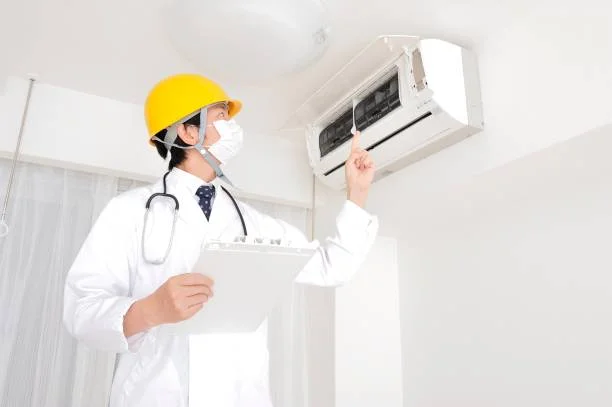Air conditioning systems have evolved into complex networks of components that require precise care to perform efficiently. When something goes wrong, identifying the source of the problem isn’t always straightforward. Without proper diagnostics, technicians may end up replacing parts unnecessarily or missing hidden issues that cause ongoing inefficiencies. The effectiveness of any AC repair begins with accurate problem detection. A diagnostic process not only saves time and money but also ensures the unit’s long-term performance and reliability. We will explore how professional diagnostics play a pivotal role in restoring comfort, optimizing energy use, and maintaining indoor air quality.
Dive deeper into related ideas that expand your knowledge and inspire fresh thinking.
How Professional Diagnostics Shape Effective AC Repair
Pinpointing Hidden Problems
AC systems often show symptoms—like weak airflow, odd noises, or inconsistent temperatures—that could stem from several different issues. Professional diagnostics help identify the exact source instead of relying on trial and error. Through the use of diagnostic tools such as pressure gauges, digital thermometers, refrigerant analyzers, and multimeters, technicians can trace problems to their origin. For example, what appears to be a refrigerant leak may actually be a malfunctioning compressor or expansion valve.
Proper diagnostics prevent unnecessary part replacements and ensure that the air conditioning repair addresses the root cause. By pinpointing hidden issues early, homeowners avoid recurring breakdowns and extended downtime during the hottest months. Accurate identification also helps maintain the manufacturer’s warranty and ensures that every component functions in balance, promoting a healthier indoor environment and greater energy efficiency.
Ensuring Energy Efficiency and Performance
When an AC system struggles to cool efficiently, the underlying cause may not always be obvious. Diagnostic testing reveals whether the inefficiency comes from restricted airflow, dirty coils, faulty sensors, or refrigerant imbalances. Once the technician understands the system’s exact condition, adjustments can be made to restore peak performance. Proper calibration of thermostats, compressors, and fans can drastically reduce energy consumption while improving comfort. For example, a compressor that short cycles or a fan running at an incorrect speed can waste significant energy over time.
Professional diagnostics ensure that each component operates within its optimal parameters. In addition, analyzing energy consumption patterns allows technicians to recommend preventive steps, like regular maintenance schedules or upgrades to more efficient parts. In the long run, accurate diagnostics save homeowners money on energy bills while extending the system’s lifespan and reducing environmental impact.
Preventing Costly Repairs Through Early Detection
One of the most valuable outcomes of thorough diagnostics is early detection. Many AC issues start small—a weak capacitor, a loose wire, or slightly low refrigerant pressure—and gradually evolve into major breakdowns if ignored. A professional diagnostic check identifies these minor irregularities before they escalate. By performing performance tests, inspecting circuit continuity, and evaluating pressure readings, technicians can predict potential failures and make proactive repairs. This approach not only avoids expensive emergency repairs but also reduces the risk of system-wide damage.
For instance, detecting a minor refrigerant leak early prevents compressor failure, one of the most costly repairs in air conditioning systems. In addition, early detection supports consistent comfort by minimizing unexpected disruptions during the cooling season. Homeowners benefit from predictable maintenance costs and fewer surprises, making professional diagnostics an investment in long-term peace of mind rather than a short-term expense.
Improving Indoor Air Quality and Comfort
Diagnostics go beyond mechanical performance—they also reveal how well the AC system supports indoor air quality and overall comfort. When airflow measurements or humidity levels are off, the results can include uneven cooling, excess moisture, or poor ventilation. Professional diagnostics assess airflow balance, filter efficiency, and humidity regulation, identifying where improvements are needed. For instance, a clogged evaporator coil or dirty ductwork can reduce air circulation, trapping contaminants and allergens inside the home. Technicians can use diagnostic findings to recommend targeted cleaning or component replacements that directly enhance air quality.
Additionally, accurate thermostat and sensor readings ensure that indoor temperatures remain consistent without overworking the system. Through diagnostic precision, comfort and health go hand in hand, creating an environment where energy efficiency, clean air, and stable temperatures coexist seamlessly throughout the home.
Supporting Long-Term System Reliability
Every air conditioning unit is built to last a certain number of years, but longevity depends heavily on maintenance and proper diagnosis of issues. Professional diagnostics provide a detailed picture of system health, enabling data-driven decisions for upkeep and repair. By keeping detailed diagnostic records, technicians can track performance trends and predict when certain parts will need attention. This predictive maintenance approach allows homeowners to schedule service before problems interrupt daily comfort. It also helps ensure that every repair aligns with the manufacturer’s specifications and performance goals.
With accurate diagnostics guiding each step, the system operates smoothly under various weather conditions and demands. This level of consistency minimizes stress on key components like compressors and motors, significantly extending their operational life. In short, diagnostics form the foundation of reliability—preventing breakdowns, maintaining energy balance, and protecting the homeowner’s investment year after year.
Professional diagnostics are the cornerstone of effective AC repair, bridging the gap between symptoms and solutions. Instead of treating surface-level problems, diagnostics uncover the true cause behind performance issues, inefficiencies, and comfort disruptions. From improving energy efficiency and indoor air quality to preventing costly breakdowns, the diagnostic process delivers both immediate and lasting value. In a world where comfort and reliability are vital, precision in detection and repair is what keeps homes cool, efficient, and dependable season after season.
Keep exploring — each post brings a fresh view to fuel your creativity and growth.






